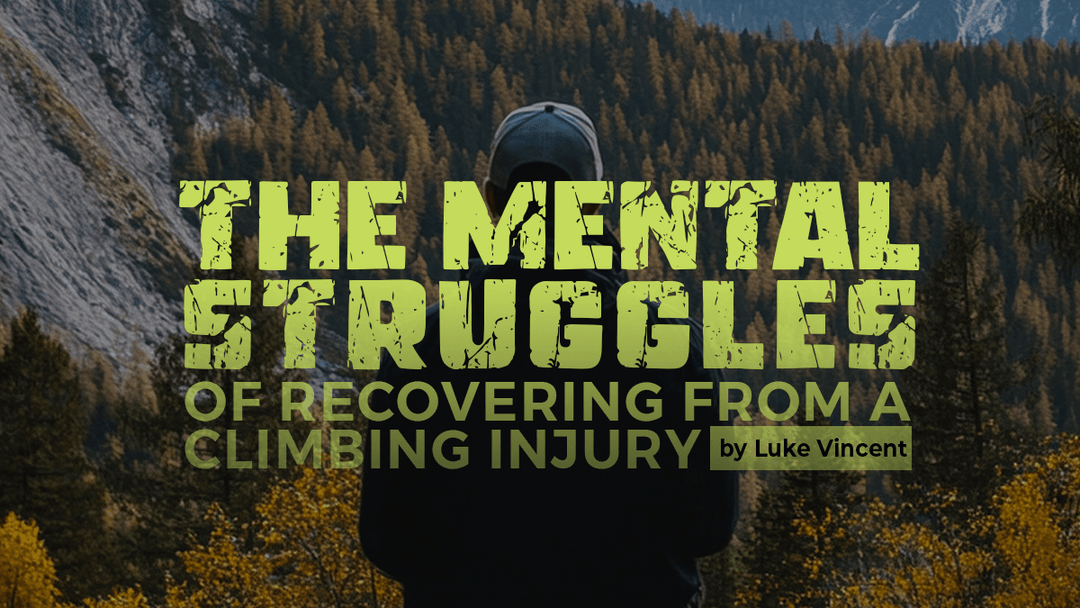Should I Resole My Climbing Shoes?

When to Resole Climbing Shoes
Resoling climbing shoes is replacing the outer layer of rubber on your shoes after they have been worn down through use. Resoling is often cheaper than buying a new pair of shoes, but is it right for you? Consider this.
Ah, another afternoon of your favorite (and by far most excellent) pastime–climbing! You tie up your favorite pair of climbing shoes. They've finally molded to your feet just right. You know their edges like the back of your hand and trust their feel on even the slipperiest moves. You approach your next route, place your hands, and then look at your feet. But, just as you lift your first foot, you notice something weird. Yeah, just there, at the tip of your left shoe. No! It can't be! Is that a hole?!?
We've all been there–the terrifying, heartbreaking moment you notice the damage on your best climbing shoes. Sometimes this realization comes as no surprise, but even the most diligent climbers can find themselves suddenly looking down at a toe starting to emerge from a well-loved pair. Losing a good set of shoes to damage can be tragic, but it doesn't always have to be! Learning more about the unique process of resoling climbing shoes, as well as the best times and options for resoling, can help you get the very most life out of your best shoes.
Rand v. Sole

Before we talk about anything else, let's walk through some parts of the climbing shoe. Grab your pair and look as we identify the rand and sole.
The sole of the shoe runs along the very bottom. It's the outermost layer of rubber. Beneath this outer layer is another, thinner layer of rubber. That is the rand! On almost all climbing shoes, you can identify the place where the sole connects over the rand by looking for a seam-like line that runs along the outline of your shoe. This seam is where the two layers overlap and seal together.
Knowing where the sole stops and the rand begins is crucial to understanding when you should resole your shoes.
When do I Resole?
Now that we know what to look for, let's talk about the damage and what different amounts of wear mean for resoling. As you climb, the sole of your shoes will start to thin. Depending on your tendencies as a climber, certain areas of the sole may begin to wear thinner before others. Sometimes parts of the rand will even wear before the sole.
If your shoes have only begun to wear down in spots and you know you're not close to wearing into the rand, you don't need a climbing shoe resole quite yet. However, if you're easily able to tell where amounts of sole have worn away, you're getting close to wearing through the sole into the rand, or you're starting to wear the rand in any area, it's prime time to get a resole.
If you have significant damage through the sole and rand to the point you can see the material of the shoe itself, it's a more challenging call. You may be able to get the shoe repaired, but it becomes much more complex and more expensive. Once the rand is worn down to the shoe material, a resolver will have to replace the rand and sole and repair the shoe completely. Climbing shoe repairs can affect the shoe's structure, fit, and function. Such an intense repair is only sometimes possible, meaning a resoler may get it and not be able to help you.
The earlier you address the damage, the easiest and, usually cheaper, it is to go through the resoling process. Resoling earlier also means you'll be more likely to be able to resole more times. Every shoe and resoler is different, so you'll get no guaranteed number of resoles out of any pair. But, with the proper care, your shoes can last through a handful of resoles before retirement.
Types of Resoles and Repairs
There are a few options for resoling, though these options will vary based on your resoler and the damage to your shoes. Typically, your options will be a full or half resole. A full resole is where the entire layer of sole rubber is removed, and a new layer is cut and fitted. Half resoles only remove the front portion of the rubber. If you have damage to multiple areas of the sole, you'll need a full resole. But if the damage is just to the front, a half resole does the job!
If you have any damage past the sole and into the rand or structure of your shoe, you'll need some additional repairs. We already touched on the difficulties of repairing a damaged shoe, but restoring a damaged rand is more straightforward. However, it's usually an extra fee. Rand repair is similar to a climbing shoe resole in that the sole is removed, then the damaged portion of the rand. Once the rand is repaired, the shoe can be resoled and sent back!
Why Resole? Why Not?
Ultimately, resoling can help you reduce waste, save money, and keep that pair of shoes that fits perfectly. Getting your shoes resoled routinely and at a point of minimum damage can be a much cheaper option than buying a brand-new pair, but waiting until intense repairs are needed can make it almost as expensive as a new pair. Finally, keep in mind the timeline of resoling–you may need another pair to climb in for a few weeks, or even months, while you wait.





